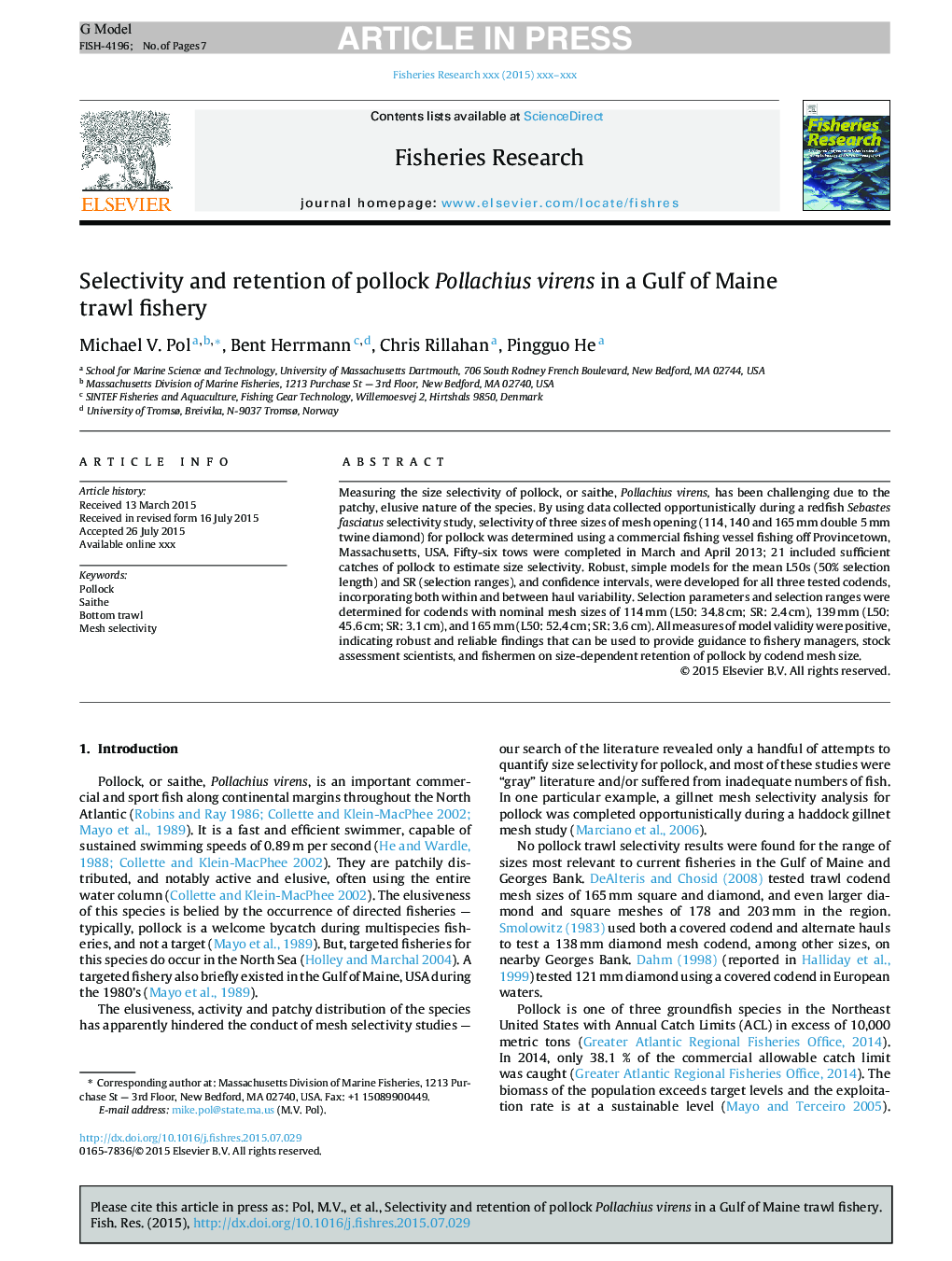| Article ID | Journal | Published Year | Pages | File Type |
|---|---|---|---|---|
| 6385277 | Fisheries Research | 2016 | 7 Pages |
Abstract
Measuring the size selectivity of pollock, or saithe, Pollachius virens, has been challenging due to the patchy, elusive nature of the species. By using data collected opportunistically during a redfish Sebastes fasciatus selectivity study, selectivity of three sizes of mesh opening (114, 140 and 165Â mm double 5Â mm twine diamond) for pollock was determined using a commercial fishing vessel fishing off Provincetown, Massachusetts, USA. Fifty-six tows were completed in March and April 2013; 21 included sufficient catches of pollock to estimate size selectivity. Robust, simple models for the mean L50s (50% selection length) and SR (selection ranges), and confidence intervals, were developed for all three tested codends, incorporating both within and between haul variability. Selection parameters and selection ranges were determined for codends with nominal mesh sizes of 114Â mm (L50: 34.8Â cm; SR: 2.4Â cm), 139Â mm (L50: 45.6Â cm; SR: 3.1Â cm), and 165Â mm (L50: 52.4Â cm; SR: 3.6Â cm). All measures of model validity were positive, indicating robust and reliable findings that can be used to provide guidance to fishery managers, stock assessment scientists, and fishermen on size-dependent retention of pollock by codend mesh size.
Keywords
Related Topics
Life Sciences
Agricultural and Biological Sciences
Aquatic Science
Authors
Michael V. Pol, Bent Herrmann, Chris Rillahan, Pingguo He,
